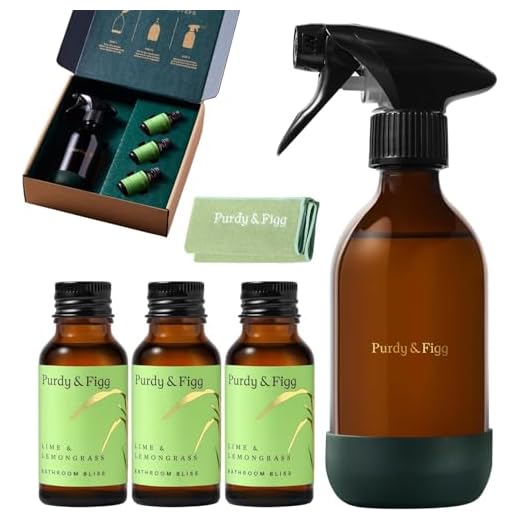


Limescale can be a frustrating problem in sinks, leaving unsightly stains that are difficult to remove. It can affect both the look and functionality of a sink, causing it to become dull and even clogged over time. Fortunately, there are several effective techniques for removing limescale and restoring your sink to its original condition.
One of the most common methods for removing limescale from sinks is by using vinegar. Vinegar is a natural acid that can break down and dissolve limescale buildup. Simply pour some vinegar onto a clean cloth or sponge and gently scrub the affected areas of the sink. For stubborn limescale, you can also soak a cloth or paper towel in vinegar and place it directly on the limescale for a few hours or overnight, then scrub it away.
Another effective technique for removing limescale is by using a mixture of baking soda and lemon juice. Baking soda is a mild abrasive that can help loosen and remove limescale, while lemon juice provides additional acidity. Mix a paste using equal parts baking soda and lemon juice, then apply it to the limescale with a cloth or sponge. Let it sit for a few minutes, then scrub the area and rinse with water.
If you prefer a commercial solution, there are also limescale removers available on the market. These products are specifically designed to tackle limescale and can be effective at removing even stubborn buildup. Follow the instructions on the packaging carefully, and be sure to rinse the sink thoroughly after using a limescale remover to avoid any residue.
In conclusion, removing limescale from sinks can be a challenging task, but with the right techniques, it can be effectively tackled. Whether using natural remedies like vinegar and baking soda, or opting for commercial limescale removers, regular maintenance and cleaning can help prevent limescale buildup and keep your sink looking and functioning its best.
The Importance of Removing Limescale
Limescale, also known as calcium carbonate, is a common substance that builds up in sinks and other fixtures over time. While it may not seem like a big deal, limescale can actually have a negative impact on the functionality and appearance of your sink. Here are several reasons why it’s important to regularly remove limescale:
1. Improved Water Flow
Limescale can accumulate in the pipes and faucets of your sink, causing a blockage or restriction in water flow. This can result in decreased water pressure and slower drainage. By removing limescale, you can restore the proper flow of water and ensure that your sink operates efficiently.
2. Prevention of Damage

Over time, limescale can corrode the surfaces of your sink, causing permanent damage and discoloration. This can lead to costly repairs or even the need for a full sink replacement. Regularly removing limescale can help prevent this damage and prolong the lifespan of your sink.
3. Maintaining a Clean and Hygienic Environment
Limescale can give your sink a dirty and grimy appearance, even if it’s regularly cleaned. It can also harbor bacteria and other microorganisms, potentially posing a health risk. By removing limescale, you can maintain a clean and hygienic environment in your kitchen or bathroom.
4. Enhanced Aesthetic Appeal
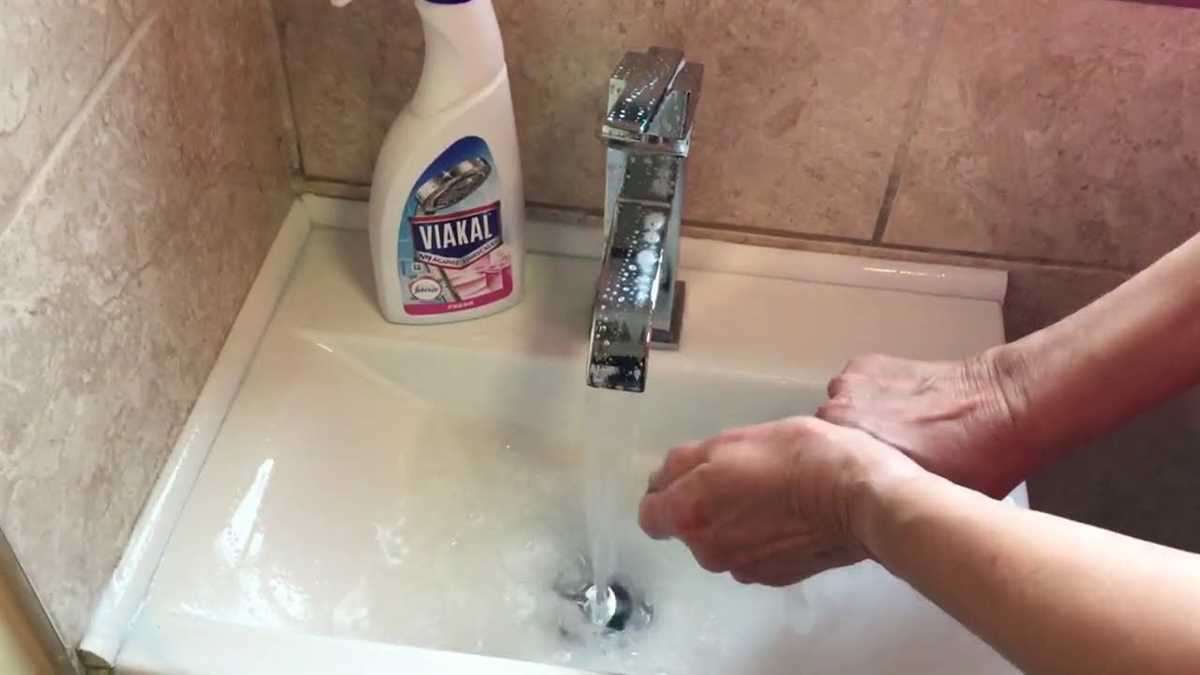
A sink covered in limescale can be an eyesore and detract from the overall appearance of your kitchen or bathroom. By removing limescale, you can restore the sink’s original shine and improve the aesthetic appeal of your space.
5. Extended Lifespan of Appliances
Limescale can not only affect the functionality of your sink, but it can also impact other appliances and fixtures connected to it, such as dishwashers and washing machines. By regularly removing limescale, you can extend the lifespan of these appliances and reduce the need for repairs or replacements.
Overall, removing limescale is important for maintaining the functionality, cleanliness, and appearance of your sinks and other fixtures. By incorporating regular cleaning and descaling into your routine, you can ensure that your sink remains in optimal condition for years to come.
Preventing Plumbing Issues
Regular Maintenance
Regular maintenance of your plumbing system can help prevent a lot of issues. Here are some important tasks to include in your routine:
- Check for leaks: Inspect all pipes and faucets for any signs of leaks. Fixing them promptly can prevent water damage and mold growth.
- Clean drains: Regularly clean your drains by pouring boiling water down them or using a mixture of baking soda and vinegar. This helps remove buildup and prevents clogs.
- Inspect water pressure: Check the water pressure at various faucets in your home. If the pressure is too high, install a pressure regulator to prevent damage to your pipes.
Proper Usage
The way you use your plumbing system can also affect its longevity and efficiency. Here are some tips for proper usage:
- Avoid dumping grease down the drain: Grease can solidify in your pipes and cause clogs. Instead, let it solidify in a container and dispose of it in the trash.
- Use drain screens: Install drain screens in your sinks and showers to catch hair, soap scum, and other debris. This will prevent them from entering the drain and causing clogs.
- Don’t flush non-flushable items: Only flush human waste and toilet paper down the toilet. Flushing items like wipes, tampons, and cotton balls can lead to clogs and plumbing issues.
Winter Precautions

During winter, taking extra precautions can help prevent frozen pipes and other plumbing issues:
- Insulate pipes: Insulate exposed pipes with foam or pipe sleeves to prevent them from freezing during cold weather.
- Keep faucets dripping: When temperatures drop, let faucets in vulnerable areas drip slightly to keep water flowing and prevent freezing.
- Disconnect and drain outdoor hoses: Before winter, disconnect and drain outdoor hoses to prevent them from freezing and potentially causing damage to your pipes.
Hire a Professional
If you’re not confident in your plumbing skills, it’s always best to hire a professional plumber for any repairs or installations. They have the knowledge and experience to handle plumbing issues safely and efficiently.
By following these preventive measures, you can minimize the risk of plumbing issues and extend the lifespan of your plumbing system.
Natural Methods for Removing Limescale
Limescale buildup is a common problem in sinks and can be quite stubborn to remove. However, there are several natural methods that can effectively help in removing limescale from sinks without the use of harsh chemicals. These natural methods are not only eco-friendly but are also safe for your health.
Vinegar
Vinegar is a versatile household ingredient that can be used for various cleaning purposes, including removing limescale. Its acidic nature helps to dissolve the mineral deposits and make them easier to scrub away. Here’s how you can use vinegar to remove limescale:
- Mix equal parts of vinegar and water in a spray bottle.
- Spray the solution directly onto the limescale deposits in your sink.
- Leave it to sit for a few minutes to allow the vinegar to penetrate the limescale.
- Scrub the area using a sponge or scrub brush to loosen the limescale.
- Rinse the sink thoroughly with water.
Lemon Juice
Lemon juice is another natural acid that can effectively break down limescale buildup. The citric acid present in lemon juice helps to dissolve the mineral deposits and remove them from the surface. To use lemon juice for removing limescale:
- Squeeze fresh lemon juice into a small bowl.
- Dip a cloth or sponge into the lemon juice.
- Apply the lemon juice directly onto the limescale deposits in your sink.
- Leave it to sit for a few minutes.
- Gently scrub the area with a sponge or scrub brush.
- Rinse the sink thoroughly with water.
Baking Soda
Baking soda is a natural abrasive that can effectively remove limescale deposits from sinks. Its gentle nature makes it ideal for cleaning delicate surfaces without causing any damage. To use baking soda for removing limescale:
- Mix baking soda with some water to form a paste.
- Apply the paste onto the limescale deposits in your sink.
- Leave it to sit for about 30 minutes.
- Scrub the area with a sponge or brush to loosen the limescale.
- Rinse the sink thoroughly with water.
A Combination of Vinegar and Baking Soda
For tougher limescale buildup, you can combine vinegar and baking soda to create a powerful natural cleaning solution. The chemical reaction between the acidic vinegar and alkaline baking soda helps to dissolve and remove stubborn limescale deposits. Here’s how you can use this combination:
- Sprinkle baking soda over the limescale deposits in your sink.
- Pour vinegar over the baking soda to create a fizzing reaction.
- Leave it to sit for about 10 minutes.
- Gently scrub the area with a sponge or brush.
- Rinse the sink thoroughly with water.
Using these natural methods regularly can help prevent limescale buildup and keep your sink clean and shiny. Remember to test these methods on a small, inconspicuous area of your sink before applying them to the entire surface.
Vinegar and Baking Soda Solution
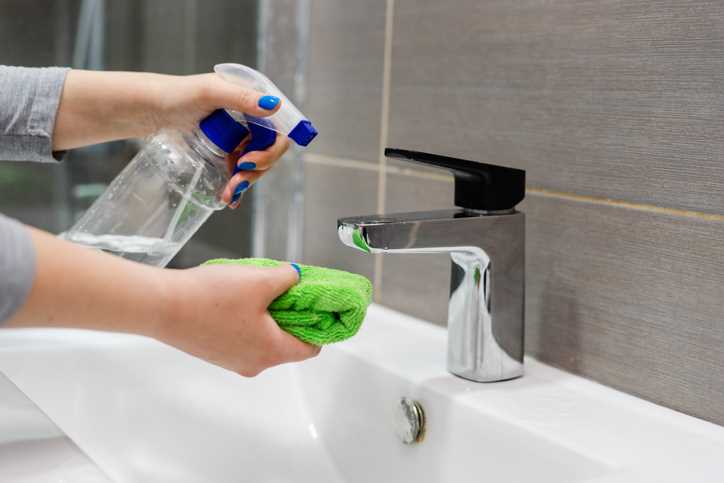
One of the most effective and natural ways to remove limescale from sinks is by using a vinegar and baking soda solution. This simple and affordable DIY solution can help dissolve and break down the built-up limescale, leaving your sink clean and shiny.
Materials Needed:
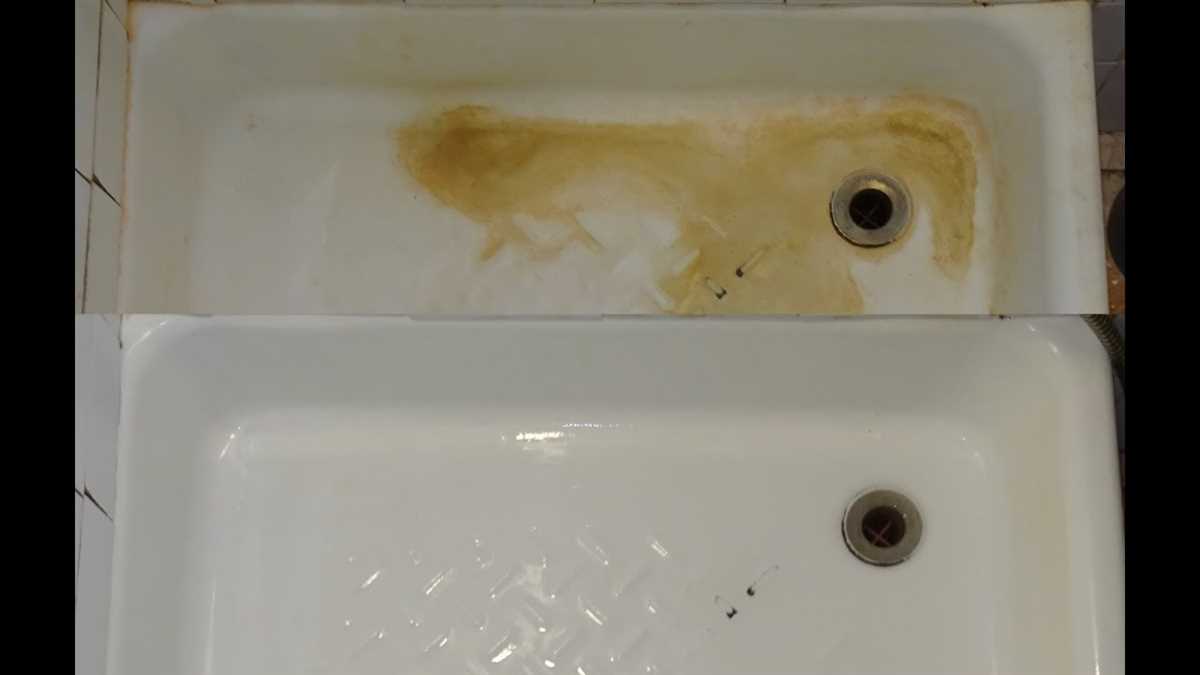
- Vinegar
- Baking soda
- Water
- Spray bottle
- Scrub brush or sponge
Instructions:
- Start by mixing equal parts of vinegar and water in a spray bottle. Shake well to ensure they are thoroughly combined.
- Spray the vinegar and water solution onto the limescale areas in your sink, making sure to cover the entire surface.
- Allow the solution to sit for a few minutes, giving the vinegar time to break down the limescale.
- Next, sprinkle a generous amount of baking soda over the sprayed limescale areas. The combination of vinegar and baking soda will create a fizzing reaction, which helps to further loosen and remove the limescale.
- Using a scrub brush or sponge, gently scrub the limescale areas in a circular motion. Apply a bit of pressure to effectively remove the limescale.
- Rinse the sink with clean water, making sure to remove all traces of the vinegar and baking soda solution.
- Dry the sink with a clean towel to prevent any water spots.
Important Note: Avoid using vinegar and baking soda on natural stones such as marble or granite, as they can damage the surface. Instead, opt for a gentle cleaner specifically designed for these types of materials.
Lemon Juice
Lemon juice is a natural and effective way to remove limescale from sinks. Its acidic properties help break down and dissolve the mineral buildup, leaving your sink clean and shiny. Here are a few steps to follow:
- Cut a lemon in half and squeeze out the juice into a small bowl.
- Using a sponge or cloth, dip it into the lemon juice and apply it to the limescale areas in your sink.
- Let the lemon juice sit on the limescale for a few minutes to allow it to break down the minerals.
- Scrub the limescale with a non-abrasive sponge or brush until it starts to loosen and come off.
- Rinse the sink with water to remove any remaining lemon juice and limescale residue.
Important: Lemon juice is acidic, so make sure to wear gloves and protect your eyes when using it. Avoid using lemon juice on surfaces that could be damaged by acid, such as marble or granite. Always test a small, inconspicuous area before using lemon juice on your sink.
Lemon juice is an environmentally friendly option for removing limescale as it is natural and doesn’t contain any harsh chemicals. Plus, the fresh citrus scent will leave your sink smelling clean and fresh!
Chemical Solutions for Tough Limescale
If you’re dealing with stubborn limescale buildup in your sink, you may need to turn to chemical solutions to effectively remove it. There are several effective chemical products available that can help you tackle even the toughest limescale stains.
1. Vinegar
Vinegar is a natural acid that can be highly effective in removing limescale. Simply soak a cloth or sponge in vinegar and apply it to the limescale stains on your sink. Let it sit for a few minutes, then scrub the area gently with the vinegar-soaked cloth or sponge. Rinse off the vinegar with water and repeat the process if necessary. Vinegar may have a strong smell, but it is an eco-friendly and affordable option.
2. Lemon Juice
Like vinegar, lemon juice contains natural acids that can effectively dissolve limescale. Cut a lemon in half and squeeze the juice directly onto the limescale stains. Allow it to soak for a few minutes, then scrub the area with a cloth or sponge. Rinse with water and repeat if needed. Lemon juice not only helps remove limescale but also leaves a refreshing citrus scent.
3. Commercial Limescale Removers
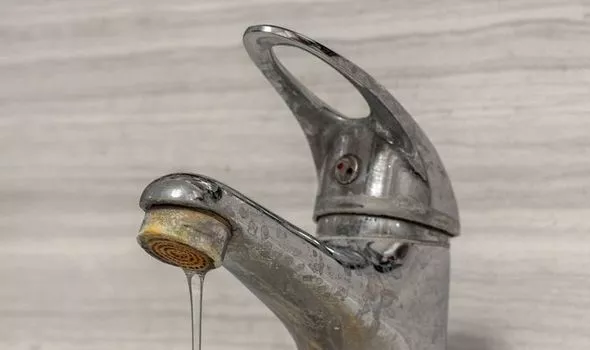
If natural solutions aren’t doing the trick, there are many commercial limescale removers available on the market. These products are specifically formulated to break down tough limescale stains. Follow the instructions on the product label for best results. Be sure to wear gloves and work in a well-ventilated area when using these products.
4. CLR (Calcium, Lime, and Rust Remover)

CLR is a popular limescale remover that is highly effective against tough limescale stains. It is safe to use on a variety of surfaces, including stainless steel sinks. Apply CLR directly to the limescale stains, let it sit for a few minutes, then scrub with a cloth or sponge. Rinse with water thoroughly after using CLR.
When using any chemical solution, always test it on a small, inconspicuous area of your sink first to ensure it does not damage or discolor the surface. Additionally, be sure to read and follow the instructions provided by the manufacturer of the product you are using.
Descaling Solutions
There are several effective descaling solutions that can help remove limescale from sinks. These solutions are easy to make at home and can save you the cost of purchasing expensive commercial descaling products.
Vinegar
One of the most popular natural descaling solutions is vinegar. Vinegar contains acetic acid, which helps dissolve limescale. To use vinegar for descaling, follow these steps:
- Fill a spray bottle with equal parts vinegar and water.
- Spray the solution onto the limescale in your sink.
- Leave the solution on for about 30 minutes to allow it to break down and dissolve the limescale.
- Scrub the sink with a sponge or brush to remove the loosened limescale.
- Rinse the sink thoroughly with water to remove any residue.
Note: You can use white vinegar or apple cider vinegar for this method.
Lemon Juice
Another effective natural descaling solution is lemon juice. Lemon juice is highly acidic and can break down limescale effectively. Here’s how to use lemon juice for descaling:
- Cut a lemon in half and squeeze out the juice.
- Apply the lemon juice directly to the limescale in your sink.
- Leave the lemon juice on the limescale for about 15-20 minutes.
- Scrub the sink with a sponge or brush to remove the loosened limescale.
- Rinse the sink thoroughly with water to remove any residue.
Baking Soda
Baking soda is another effective descaling solution that can be used to remove limescale from sinks. Baking soda is a mild abrasive and can help scrub away limescale buildup. Follow these steps to use baking soda for descaling:
- Mix equal parts baking soda and water to form a paste.
- Apply the paste to the limescale in your sink.
- Gently scrub the sink with a sponge or brush to loosen the limescale.
- Rinse the sink thoroughly with water to remove any residue.
Commercial Descaling Products
If the natural descaling solutions mentioned above do not work effectively, you can opt for commercial descaling products. These products are specifically formulated to remove limescale and can be found in supermarkets or hardware stores. Always follow the instructions provided on the product’s packaging for best results.
Tip: To prevent limescale buildup in the future, it’s recommended to regularly clean your sink with a mild soap or all-purpose cleaner and wipe it dry after use to prevent water spots.
FAQ
What is limescale and how does it form in sinks?
Limescale is a hard, chalky deposit that forms on surfaces that come into contact with hard water. It is primarily made up of calcium carbonate and magnesium carbonate. When hard water is heated, the minerals in it separate out and form limescale deposits.
What are some effective techniques for removing limescale from sinks?
There are several techniques that can be effective in removing limescale from sinks. One common method is to use a mixture of vinegar and water. Simply spray the mixture onto the limescale and let it sit for a few minutes before scrubbing it away. Alternatively, you can use a paste made from baking soda and water. Apply the paste to the limescale and scrub it with a soft cloth or sponge. Another option is to use a commercial limescale remover that is specifically designed for use in sinks.
What are the potential risks of using abrasive materials to remove limescale?
Using abrasive materials, such as steel wool or harsh scouring pads, to remove limescale can potentially scratch the surface of the sink. This can result in a dull appearance and make the sink more susceptible to future limescale buildup. It is recommended to use non-abrasive materials, such as soft cloths or sponges, when cleaning limescale to avoid damaging the sink.
Are there any preventive measures that can be taken to reduce the formation of limescale in sinks?
Yes, there are preventive measures that can help reduce the formation of limescale in sinks. One option is to install a water softener or a water conditioner, which can remove the hardness-causing minerals from the water. Regularly cleaning and drying the sink after each use can also help prevent limescale buildup. Additionally, using a calcium and lime scale remover regularly can help keep the sink free from limescale deposits.

